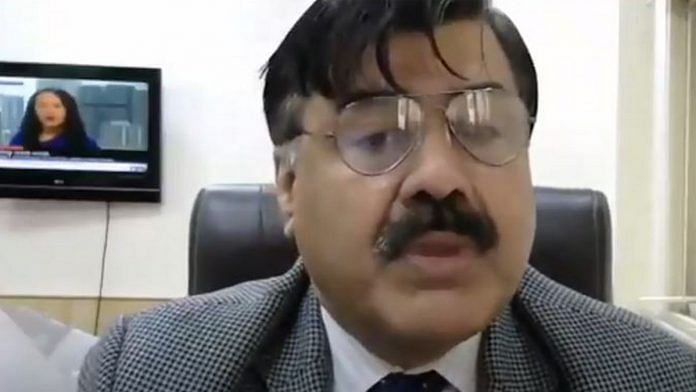New Delhi: China is still India’s largest source of import for critical sectors like pharmaceuticals and electronics, among other goods, Sanjay Chadha, Additional Secretary, Department of Commerce, said Friday.
He, however, said competition with Beijing was likely to increase as India starts looking at “supply-chain resilience” and diversifying sources.
Chadha was speaking at the 13th All India Conference of China Studies (AICC).
He offered the example of how India has reduced dependence on China for steel imports. “Until 2015, our steel imports were maximum from China. They were $2.8 billion. Today, they are down to less than a billion. Who has replaced China? Korea. Why? The Korea FTA (free trade agreement) gave a zero per cent duty to steel,” he said.
Last month, the Union cabinet had approved a Production-Linked Incentive (PLI) scheme worth Rs 2 lakh crore for 10 manufacturing sectors for the next five years. These sectors include automobiles and auto components, pharmaceuticals, specialty steel, capital goods, technology products, white goods (ACs and LEDs), telecom and networking products, textiles, high efficiency solar PV modules and advanced battery cells.
“We have over-dependence in electronics. If 85 per cent of my components are dependent on one country, should I not have a PLI to have the big companies come here?” Chadha said. “We saw Apple [Inc.] start manufacturing in India. The PLI is going to accentuate that investment.”
Chadha made his remarks during a panel discussion titled ‘Reducing Dependency in Economic Engagement with China’, organised jointly by the Institute of Chinese Studies and the China Studies Centre at IIT Madras.
Also read: India’s fight against China challenge must start with Budget 2021
India’s ‘skewed’ bilateral trade with China
Chadha spoke on how India has been tackling its “skewed bilateral trade with China”. In 2010, China became India’s largest trading partner and its trade deficit with China rose to $63 billion by 2017-18, he explained.
“Around 65 per cent of this was intermediaries,” added Chadha, which raised concerns about India’s over dependence on a single source. Trade intermediaries are agents, wholesalers, distributors and retailers who assist manufacturers in the sale and distribution of their products.
In 2018-19, India’s trade deficit with China came down to $53 billion but there was a “huge” trade deficit with Hong Kong, which raised concerns as to whether China was rerouting trade through the latter, Chadha said. India’s trade deficit with China hit a five-year low of $48.66 billion in 2019-20.
Despite a lowering trade deficit, industry stakeholders have complained that China is an “opaque market” due to the political structure of the country’s government that spills over into trade, said Chadha.
He also added that India’s production lines still suffer under Chinese control. “If China would stop API (active pharmaceutical ingredient) for penicillin, we would not be able to produce it in this country (India),” he said, and asked why India’s pharmaceuticals “do not find a place in Chinese shelves”.
ThePrint was a digital partner for the ICS conference.
Also read: China’s ‘duality of cooperation & competition’ was evident before LAC standoff — Jaishankar



